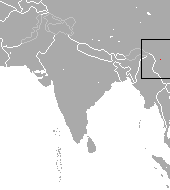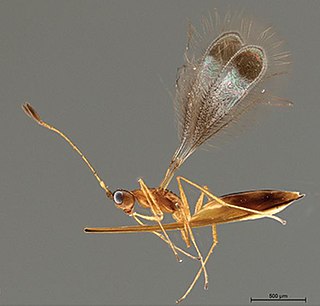
The Global Biodiversity Information Facility (GBIF) is an international organisation that focuses on making scientific data on biodiversity available via the Internet using web services. The data are provided by many institutions from around the world; GBIF's information architecture makes these data accessible and searchable through a single portal. Data available through the GBIF portal are primarily distribution data on plants, animals, fungi, and microbes for the world, and scientific names data.
The Catalogue of Life is an online database that provides an index of known species of animals, plants, fungi, and microorganisms. It was created in 2001 as a partnership between the global Species 2000 and the American Integrated Taxonomic Information System. The Catalogue is used by research scientists, citizen scientists, educators, and policy makers. The Catalogue is also used by the Biodiversity Heritage Library, the Barcode of Life Data System, Encyclopedia of Life, and the Global Biodiversity Information Facility. The Catalogue currently compiles data from 165 peer-reviewed taxonomic databases that are maintained by specialist institutions around the world. As of September 2022, the COL Checklist lists 2,067,951 of the world's 2.2m extant species known to taxonomists on the planet at present time.

Epomophorus is a genus of bat in the family Pteropodidae. They have a distribution throughout Africa.
Syzygium cordifolium is a species of plant in the family Myrtaceae. It is endemic to Sri Lanka.

In biology, Lipotriches is a large genus of sweat bees in the family Halictidae, distributed widely throughout the Eastern Hemisphere though absent from Europe. There are nearly 200 species in 9 subgenera. They commonly have prominent bands of hair on the margins of the metasomal segments.

Van Sung's shrew, also known as Cao Van Sung mountain shrew is a species of shrew in the Soricomorpha order. Specimens of Chodsigoa caovansunga have been found in Vietnam.

The pygmy brown-toothed shrew is a species of shrew in the order Eulipotyphla. It is distributed in China. C. parva was initially thought to be the same as Chodsigoa lamula, but it was found to be a separate species.
Episoriculus is a genus of shrew in the red-toothed shrew subfamily. Its common is brown-toothed shrew. It has been described as a subgenus to Soriculus in the past. The genus occurs at a number of locations in Asia, including Nepal and China.
Lipotriches notiomorpha is a species of bee in the genus Lipotriches, of the family Halictidae. It is endemic to Sri Lanka, where it was first found from Anuradhapura district.
Lipotriches krombeini is a species of bee in the genus Lipotriches, of the family Halictidae.
Lipotriches basipicta is a species of bee in the family Halictidae.
Lipotriches torrida is a species of bee in the genus Lipotriches, of the family Halictidae.
Lipotriches exagens is a species of bee in the genus Lipotriches, of the family Halictidae.
Lipotriches fervida is a species of bee in the genus Lipotriches, of the family Halictidae.
Lipotriches pulchriventris is a species of bee in the genus Lipotriches, of the family Halictidae. It is widespread in Southeast Asia and variable in appearance, and has been given numerous names since its original description.
Lipotriches edirisinghei is a species of bee in the genus Lipotriches, of the family Halictidae.
Rhadalognathus was a prehistoric crocodile-like amphibian that belongs to the Mastodonsauridae family. Not much is known about this creature but it lived in the Triassic period. Rhadalognathus is also the name of the genus in which the organism belongs within. Rhadalognathus was found in northern Arizona, US, by S. P. Welles in 1947. The size of the organism is unknown but its skull is about 17in long and weighs 7lbs.

Polynema is a genus of fairyflies or fairy wasps, insects in the family Mymaridae.

Nomiinae is a subfamily of sweat bees in the family Halictidae. There are about 11 genera and at least 550 described species in Nomiinae.

Euphorbia terracina, the Geraldton carnation weed, is a species of perennial herb in the family Euphorbiaceae. It has a self-supporting growth form and simple, broad leaves. Flowers are visited by Lipotriches brachysoma, Lipotriches natalensis, Lipotriches crassula, and Nomia bouyssoui.







